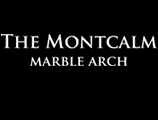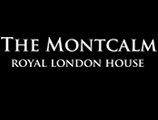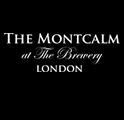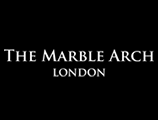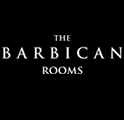London is a city that spans over 1500 square kilometres and is made up of 32 unique and characterful boroughs. The incredible array of sights and sounds in London are enough to fill up not only a weekend’s stay at accommodation in London City, but weeks, if not months. Many locals, even those who have lived in London for decades, will admit that they haven’t visited every borough in the city. The fact of the matter is that there’s simply so much to see and tourists will no doubt be drawn to the major hubs of the West End, South Bank and royal parks, but one area that can often be overlooked is the historic district of the Isle Of Dogs.
For guests of East London’s Montcalm at the Brewery, the Isle of Dogs is easy to reach and often is the focal point for business travellers from all across the world. You may even have passed through on your way from City Airport, located on the riverside next to the Island. This blog will explore some of the many tourist attractions and landmarks of the Isle of Dogs and why it represents many different aspects and shades of London.
What Is The Isle Of Dogs?
The Isle Of Dogs is located in East London and consists of an area of land around a meandering curve in the Thames. Three sides of this peninsula are bounded by the River Thames, and so it’s phrasing as an island is three-quarters correct! The Isle of Dogs currently consists of high rise skyscrapers, modern riverside housing and apartments and historic 19th and 20th century buildings.
History Of The Isle Of Dogs
The Isle of Dogs was originally a marsh close to the City of London, and was developed for human habitation during the Mediaeval period. During the 19th century, the West India Docks were developed on the Isle of Dogs, named so due to their use as a ferry dock for emigrating West Indians coming to work in London. Following this, the area became increasingly populated, many dock workers living in terraced housing in the area. Once the industry of dock work in London diminished, unemployment and extensive bombing during World War II led to the area’s redevelopment into the modern development it is today.
Hub For Business
The modern aspect of Canary Wharf comes from its inclusion of the Canary Wharf business hub. The home of London headquarters for HSBC, American Banking and Credit Suisse, Canary Wharf has long been a finance centrepoint for London workers.
Tourist Hidden Gem
As mentioned above, the Isle of Dogs has an extensive and unique history of river management, seafaring and trade. The mosaic of architecture that’s developed through the years means that guests of London hotel offers visiting the area can enjoy a diverse range of neighbourhoods, from East End market streets, Victorian churches and glittering modern skyscrapers.
Isle Of Dogs And Public Transport
The Isle of Dogs is served by several bus services and two distinct train lines. The Jubilee Line runs through central London from northwest into east, and stops at Canary Wharf and North Greenwich across the river.
The DLR line, or Docklands Light Railway is a metro system that primarily runs through the Isle of Dogs, Central and Southeast London, being the best mode of transport to City Airport. Bus services to the Isle of Dogs include the D7, 135, the N550, D6 and D8.
From the Montcalm at the Brewery London City Hotel, your best bet is to reach Bank Station via bus or Central Line and then catch the DLR line into the Isle of Dogs.
Things To Do In Isle Of Dogs
The Isle of Dogs might be a business hub, but it has a lot to offer tourists as well. Whether you’re a guest of 5 star hotels near the Barbican London riding the DLR Line for the stunning riverside views, shopping opportunities or tourist attractions, there’s plenty to enjoy on a visit to the Isle of Dogs.
O2 Arena
Whilst it’s not technically located in the Docklands, the O2 Arena in North Greenwich is one of the largest entertainment and shopping venues in London. Developed at the turn of the Millennium as an exhibition centre, the O2 Arena is just across the river from Canary Wharf and easily reachable via the Jubilee Line. The O2 Arena and its surrounding shopping complex is home to high street stores, pubs, eateries and the 20,000 capacity venue that’s hosted the likes of Rihanna, Justin Bieber and many other international stars.
Mudchute Farm And Park
This much loved urban farm is also housed on a nature reserve that was once marshland and silt from engineering work in the 19th century. The park is home to sheep, pigs, ponies, llamas, donkeys, ducks and a wealth of different birds. Situated over 32 acres overlooking Canary Wharf, Mudchute Farm is perfect for an afternoon out with small children.
Museum Of London Docklands
Located near West India Quay, the Museum of London Docklands is a subsidiary of the Museum of London and specifically charts the city’s dockland area history. Investigating everything from the development of the Port of London, Atlantic slave trade and reconstructed dockland boats and trawlers, this museum expands our understanding of the Isle of Dogs and its importance to the city.
The Space Theatre
Located close to Mudchute on the DLR Line, this fringe theatre is situated in a renovated Victorian Prebyterian church and stages drama, dance and comedy to the locals of the Isle Of Dogs. With its patron being Ian McKellen, the theatre, which seats between 60 and 145, is also home to a bar , cafe and eatery.
Canary Wharf
Home to One Canada Square, the distinctive prism topped skyscraper, this ultra modern business district is centred around Canary Wharf, a distinctive and lavish square at the heart of the Isle of Dogs. Canary Wharf is also home to extensive shopping opportunities underneath One Canada Square whilst canalside walks and the lavish central square fountain all add to the charm of the area.




















